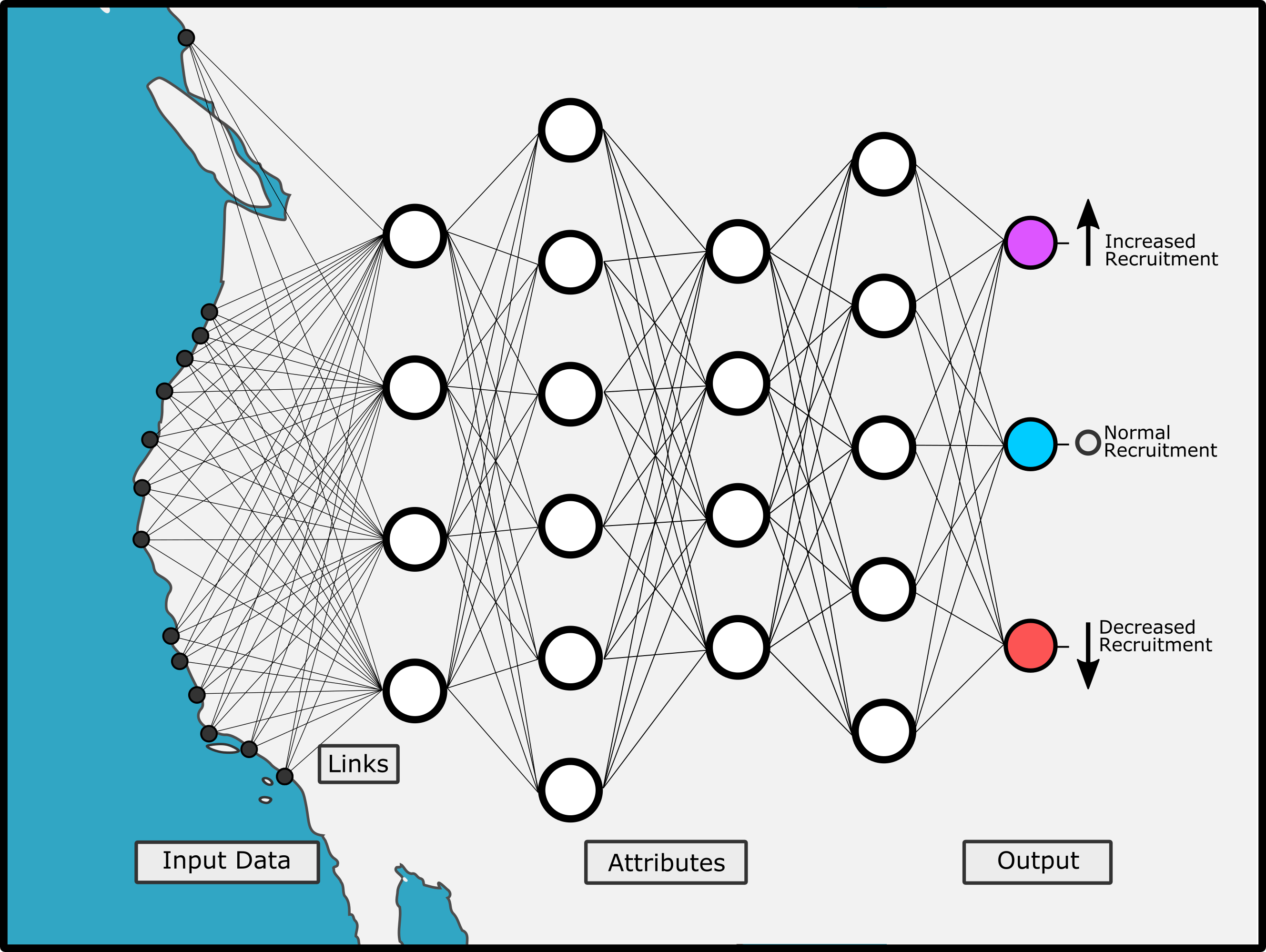biogeography under climate change
broadly, my research aims to understand how climate and climate change influence
how species live, where they are, and where they may one day be.

Predicting Ecological Outcomes
We live in a transition time for ecological research as large-scale spatial and temporal data are available like never before. With growing abundance of empirical data and growing urgency to address ecological problems as anthropogenic environmental impacts increase, there exists a fundamental need for stronger efforts in data-driven ecological synthesis, and forecasting of short-term outlooks of ecological problems.
My current research aims to use long-term species assemblage and recruitment data from intertidal environments along the North American West Coast to understand when and where climate-driven range shifts have occurred and predict when they might occur in the future. I hope to use real-time data and state-of-the-art analytical techniques to build tools that will continue to analyze and repredict range shifts as data continue to be collected.

Summarizing Range Shift Detections
Emperically observing species range shifts that have already occurred offers critical insight into drivers and constraints on species ranges, but our ability to monitor range changes is often limited by data availability and resolution over large spatial and temporal scales. The often-opportunistic nature of large-scale biogeography research leads to inconsistency in methodological techniques between range-shift observation studies, and this inconsistency may present barriers when comparing results from one study to another.
Part of my current research uses systematic reviewing of range shift literature to summarize common methods in biogeography research, and assess how these methods may affect results.

Marine Larvae in Climate Change
My masters research sought to understand effects of multiple climate stressors on growth and survival of marine invertebrate larvae. During this project, I designed a novel experimental system to culture oyster larvae in interacting gradients of temperature, salinity, and acidification. Measurements of daily growth rate and percent mortality from 50 unique experimental treatments formed the training dataset to fit statistical models describing larval responses across this 3-dimensional treatment gradient. We then used these models to predict larval success at oyster restoration sites in Washington State now and in the future.
We found that oyster larvae in the Salish Sea are sensitive to temperature and salinity, but tolerant of acidification, and may actually benefit from some degree of global climate change.
Our ongoing work on this project asks how these changes in growth and survival will affect dispersal and population distribution of the species in future oceans.
Lawlor & Arellano 2020, Scientific Reports






